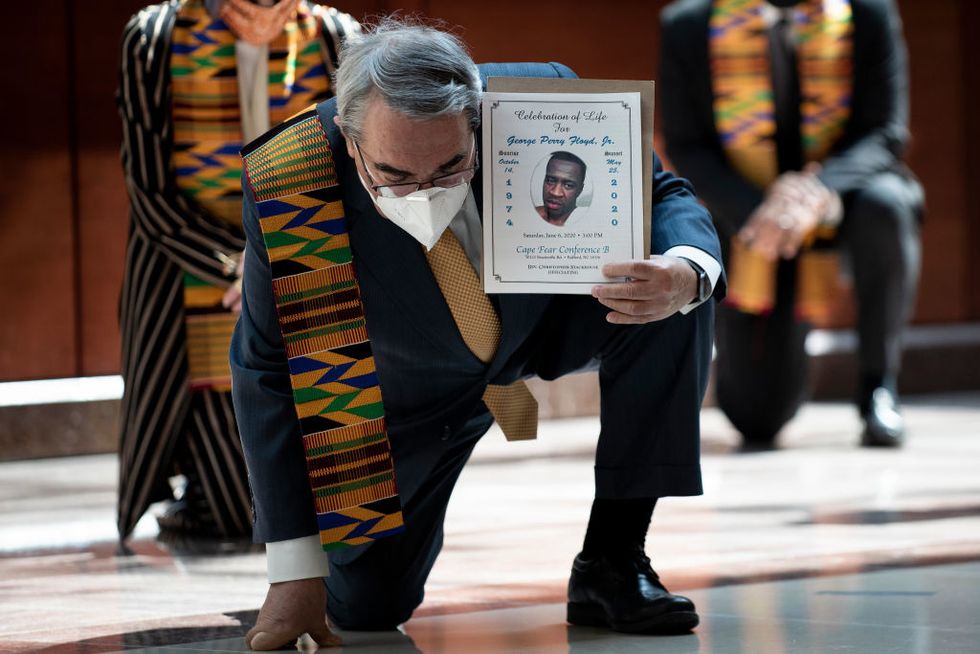
Chip Somodevilla/Getty Images

Yikes
House Speaker Nancy Pelosi (D-Calif.) and other top Democratic leaders marched into the U.S. Capitol Visitor's Center last week and knelt for eight minutes and 46 seconds, the same amount of time that fired Minneapolis cop Derek Chauvin kneeled on George Floyd's neck.
But it was what the congressional Democrats wore — traditional West African kente cloths — that made headlines. In fact, they were harshly criticized for what came across as mere pandering.
As it turns out, those kente cloths have roots in the African slave trade, according to a USA Today fact check.

The day following the political stunt, Facebook user Dave Brandon claimed, in a post that received thousands of shares, that the scarves are connected to African slave traders.
Brandon wrote:
So check this out, Kente cloth was worn by the Ashanti. It's made of silk so the affluent wore it. The Ashanti were also known as slave owners and traders. Huh? The Ashanti's long-time ally, the Akwamu, were among the first ones to profit from the slave trade with the Europeans. Their captives were almost always prisoners of war, but they were not above to selling Akwamu men who offended the chief. They also kidnapped able-bodied men from other tribes and sold them in the coastal slave markets.
According to USA Today's fact check, Brandon is correct.
The kente cloth comes from "the Asante, or Ashanti, peoples of Ghana and Ewe peoples of Ghana and Togo," according to USA Today. Asantehene Osei Tutu, the first ruler of the Asante Kingdom, adopted the scarf as a royal symbol, the fact check explained.
From USA Today:
Tutu, who lived from 1660 to 1712 or 1717, unified several small Asante kingdoms to create the Asante empire. He is credited with expanding the Asante throughout most of Ghana and introducing his subjects to the gold and slave trades along the West African coast.
The Asante supplied British and Dutch traders with slaves in exchange for firearms, which they used to expand their empire. Slaves were often acquired as tributes from smaller states or captured during war. Some slaves were brought across the Atlantic whiles others stayed in Africa to work in gold fields.
By the end of the 18th century, the region was exporting between 6,000 and 7,000 African slaves per year, according to the BBC.
However, in modern times, the kente cloth has become a symbol of African pride and is traditionally worn during special occasions.
Diana Baird N'Diyea, cultural specialist and senior curator at the Smithsonian Center for Folklife and Cultural Heritage, told USA Today she places the significance of the Kente in the people who craft them — not the scarf's origins.
"My way of thinking about it is that it honors the creativity, the ingenuity, the skill of the people who actually make the kente," she said.